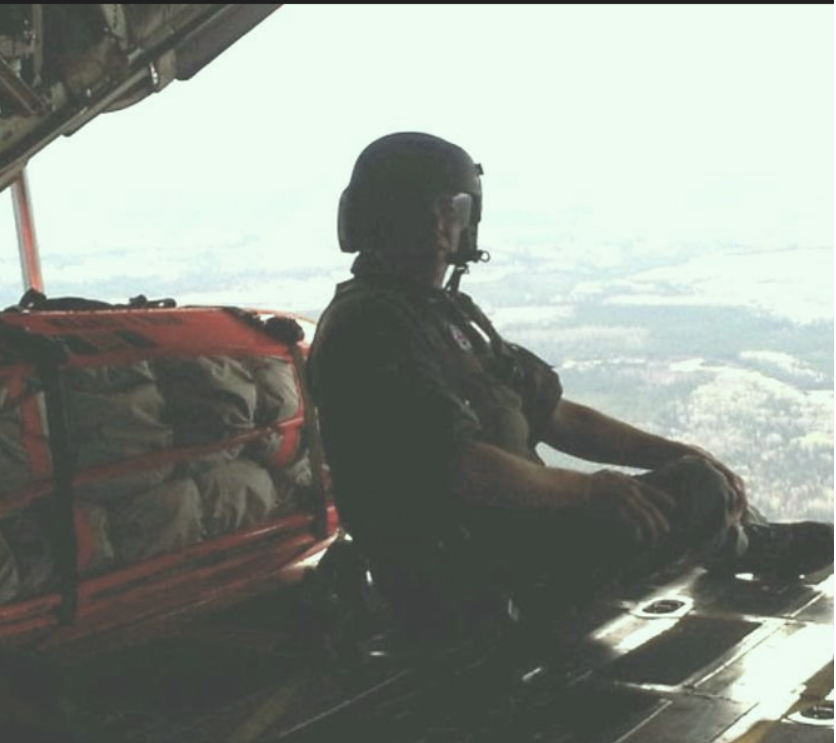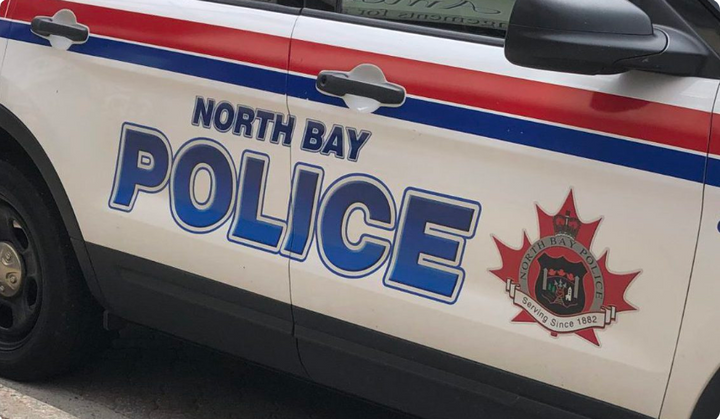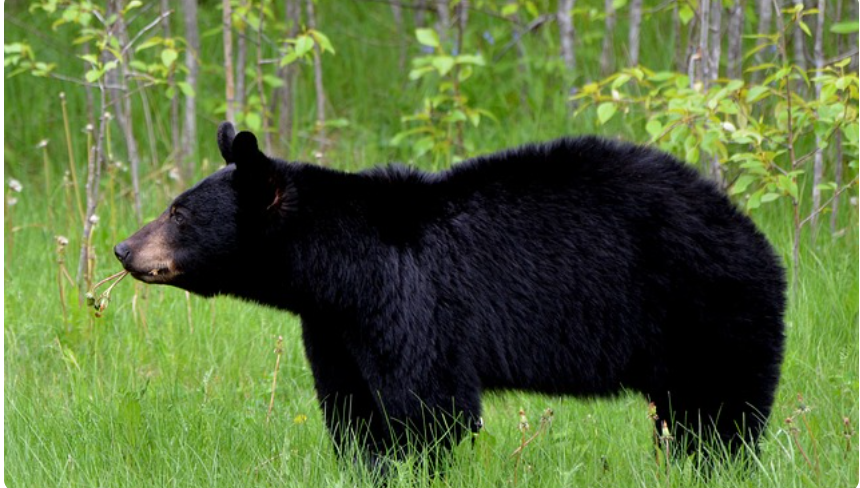Wally

Weekly Column by Chris Charland
Squadron Leader Henry Wallace 'Wally' McLeod's did achieve his goal as Canada's top scoring ace. His final tally was 21 confirmed kills, one probable and 9 1/4 damaged.
Squadron Leader Henry Wallace 'Wally' McLeod D.F.C. and Bar, D.S.O. was born on the 17th of December 1915 to James Archibald and Hannah Elizabeth McLeod (nee Morris), of Regina, Saskatchewan. He began his military life as a member of both the 5th Saskatchewan Regiment and Regina Rifle Regiment between 1928 and 1934. Prior to enlisting in the Royal Canadian Air Force on the 2nd of December 1940, Wally taught school.
He trained at No.2 Initial Training School in Regina, Saskatchewan and graduated on the 27th of November. From there, Wally proceeded to No. 6 Elementary Flying Training School at Prince Albert, Saskatchewan and graduated on the 16th of January 1941. He was selected to go to No.1 Service Flying Training School at R.C.A.F. Station Camp Borden, Ontario. Upon graduating on the 1st of April 1941, Wally was posted overseas and arrived in the United Kingdom on the 9th of May 1941. After further flying training, he was posted to No.132 'City of Bombay' (F) Squadron at R.A.F. Station Skaebrae, Orkneys. While there, he flew the iconic Supermarine Spitfire Mk.I from 21st of July into August 1941.

Wally was posted to the New Zealand-manned No. 485 (F) Squadron at R.A.F. Station Redhill, Surrey on the 28th of August 1941. The unit flew the Vickers-Supermarine Spitfire Mk.Vb. Wally left the squadron on the 2nd of December 1941. His next posting was to the Spitfire Mk.Vb-equipped No.602 'City of Glasgow' (F) Squadron at R.A.F. Station Kenley, Surrey. He flew with the squadron from the 2nd of December to the 23rd of December 1941. Wally next went to the Royal Canadian Air Forces's No.411 'Grizzly Bear' (F) Squadron at R.A.F. Station Hornchurch, Essex. He flew Spitfire Mk.Vb's and fought alongside his fellow Canadians from the 23rd of December 1941 to the 5th of May 1942. During his time with his fellow Canucks, No.411 (F) Squadron relocated to R.A.F. Station Southend, Essex on the 7th of March 1942.
Wally was posted to No.603 'City of Edinburgh' (F) Squadron and duty on Malta effective the 3rd of June 1942. No.603 (F) Squadron operated Spitfire Mk.Vc's from Ta Kali. It was constant action for the island defenders. The axis powers were relentless in their aerial assaults upon the tiny island nation. The stress of seemingly non-stop attacks by the Germans and Italians strained the allied pilots to their limits. By the end of June 1942, Wally reported to Luqa on Malta for flying duties with No.1435 Flight. This unit operated the Spitfire Mk.Vb and Mk.Vc during his tenure there. The flight was expanded to a full squadron on the 2nd of August 1942 after the disbandment of Wally's previous unit No.603 (F) Squadron.

Wally fought alongside such legendary pilots like the 'Falcon of Malta' Flight Lieutenant George 'Buzz' Beurling of Verdun, Quebec. Malta was a great hunting ground for Wally as he bagged 13 enemy aircraft. It was in Malta that he displayed, much to the dismay of the enemy, his remarkable skills in combat. For one particular engagement, Wally was presented the Distinguished Flying Cross. The citation reads:
McLeod, F/L Henry Wallace (J4912)
Distinguished Flying Cross - No.1435 Squadron award effective 3 October 1942 as per London Gazette dated 13 October 1942 and A.F.R.O. 1690/42 dated 23 October 1942.
"In September 1942, this officer participated in an engagement against at least 20 Messerschmitt Bf-109's. Despite the odds, Flight Lieutenant McLeod so skillfully led his section during the combat that the enemy force was completely broken up. This officer has always displayed the greatest determination to engage the enemy and has destroyed at least five and damaged a number of other hostile aircraft. His leadership has been most inspiring."
Wally left Malta on the 27th of October for the United Kingdom but not before receiving a Bar to his Distinguished Flying Cross. The citation reads:
McLeod, F/L Henry Wallace (J4912)
Bar to Distinguished Flying Cross - No.1435 Squadron
Award effective 22 October 1942 as per London Gazette dated 3 November 1942
and A.F.R.O. 1962/42 dated 4 December 1942:
"One day in October 1942, this officer took part in an attack on a formation of six Junkers Ju-88's and shot two of them down. Although his aircraft was damaged in the combat, he led his section in an attack on another formation of nine enemy bombers. Afterwards, he skillfully flew his damaged aircraft to base. During a period of five days Flight Lieutenant McLeod destroyed five enemy aircraft in the defence of Malta. A gallant fighter, this officer has destroyed twelve and damaged many more enemy aircraft."
On the 20th of December 1942, Wally found himself heading back to Canada for a posting to No.1 Operational Training Unit at R.C.A.F. Station Bagotville, Quebec. While there, he taught future fighter pilots the valuable lessons he learned in Malta on Canadian-built Hawker Hurricanes. On the 23rd of December 1943, Wally assumed command of No.127 (F) Squadron from Squadron Leader P.A. Gilbertson. The squadron flew Canadian-built Hawker Hurricane Mk.XII's on east coast air defence duties from R.C.A.F. Station Dartmouth, Nova Scotia. Wally would have the distinction of being the squadron's last Commanding Officer. His command came to an end on the 8th of February 1944.
In late 1943, No.127 (F) Squadron had been selected as last of six Home War Establishment fighter squadrons for duty overseas. It was subsequently renumbered as No.443 'Hornet' (F) Squadron at R.A.F. Station Digby, Lincolnshire on the 8th of February 1944. Squadron Leader Wally McLeod assumed command of the new unit on the same day. When Wally came back England, he made no secret of his desire to surpass 'Buzz' Beurling as Canada's top-scoring pilot. This was noted by legendary Royal Air Force Wing Commander Johnnie Johnson who assumed command of the R.C.A.F.'s No. 144 Wing, Second Tactical Air Force on the 8th of March 1944. The Spitfire Mk.IXb-equipped Wing was comprised of No. 441 'Silver Fox' (F) Squadron, No. 442 'Caribou' (F) Squadron and No. 443 'Hornet' (F) Squadron. "He was a cool-eyed, alert man of 28. The first time I met him he moved about the room restlessly. He had the reputation of being a deadly shot, very fast on the draw. A killer I there ever was one, I thought. Might be inclined to stick his neck out too far, I'll watch him." (Johnnie Johnson)
The Wing's first aerial victory came on the 19th of April 1944. A combined force of 27 Spitfires from No.'s 442 and 443 Squadrons led by Wing Commander Johnnie Johnson, flew close escort for one of three formations of U.S.A.A.F Ninth Air Force Martin B-26 Marauder medium-bombers which attacking marshalling yards at the small Flemish town Malines in Belgium. The Wing then swept the Venlo-Gilze region of the Netherlands. Wally shot down a Dornier 217 flying at 100 feet west of Diest, Belgium. He added more victories to his credit as the Wing worked its way across the continent after D-Day, closer to Germany and ultimate victory. Wally received the Distinguished Service Order in September 1944. The citation reads:
McLeod, S/L Henry Wallace, D.F.C. (J4912)
Distinguished Service Order - No.443 (F) Squadron
Award effective 5 September 1944 as per London Gazette of that date and A.F.R.O. 2373/44 dated 3 November 1944.
"This officer continues to display the highest standard of courage and resolution in air operations. He is an exceptional leader and a relentless fighter whose achievements are worthy of the highest praise. He has destroyed seventeen enemy aircraft."
Fate finally caught up with Wally on the afternoon of the 27th of September 1944. He and his squadron accompanied by Johnnie Johnson, were on patrol between Arnhem and Nijmegen in the Netherlands. Wally was flying Spitfire s/n NH245. There was a heavy cloud base at 12,000 feet but the visibility was excellent. They flew along at the base of the clouds for a while when a formation of nine Luftwaffe Bf-109's was spotted 4,000 feet below. The Germans were in two small line-abreast sections, one of five aircraft and the other of four. Wally dove towards the starboard gaggle. The leader of the enemy starboard formation pulled his aircraft into a vertical climb. This was a standard maneuver that saw the aircraft half-roll on the top of his loop gaining vital altitude. The pilot would then aileron-turn his aircraft down in a fast dive to position himself for the attack. Johnson was engaged in his own duel but was able to warn Wally "watch that brute Wally, he's coming in!"
That was the last time that anyone saw Wally alive. The 28-year-old's body was found in the wreckage of his Spitfire after the war north-west of Wesel, Germany. Wally peacefully rests in 8.E.25 of the Rheinburg War Cemetery in Germany buried in the War Cemetery at Rheinburg, Germany. Squadron Leader Henry Wallace 'Wally' McLeod's did achieve his goal as Canada's top scoring ace. His final tally was 21 confirmed kills, one probable and 9 1/4 damaged.

BIO
Chris Charland is a former member of the Canadian military. On June of 1991, he began writing as a military affairs journalist with CFB North Bay's newspaper "The Shield". Since then, Chris has done a wide variety of writing and became a published author in 1997. He has written and contributed to over 20 books related to air force history and civilian aviation. Chris is an Associate RCAF Historian. He is also a licensed pilot and amateur radio operator. Some of his time is also taken up with North Bay Air Search and Rescue.



